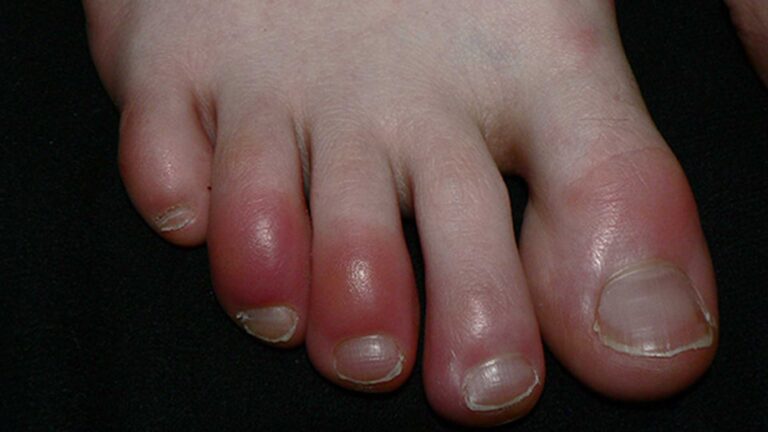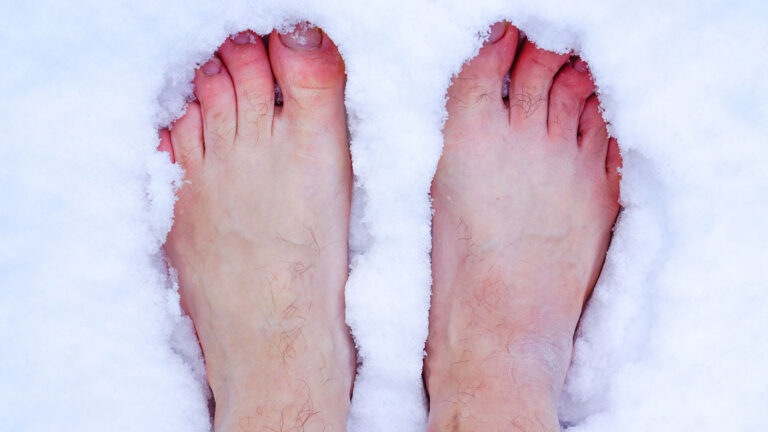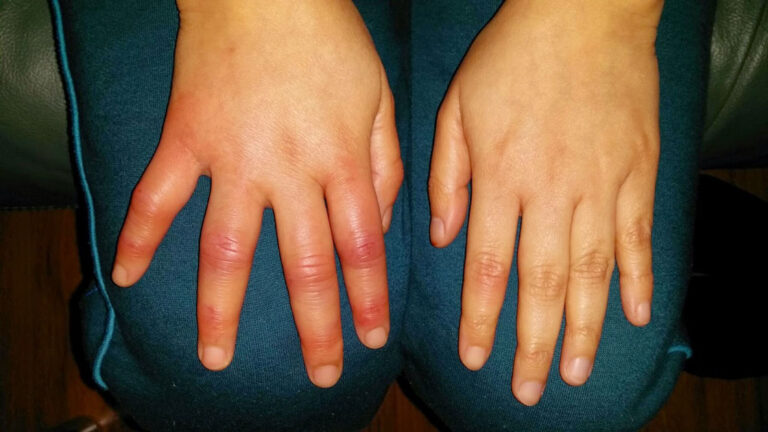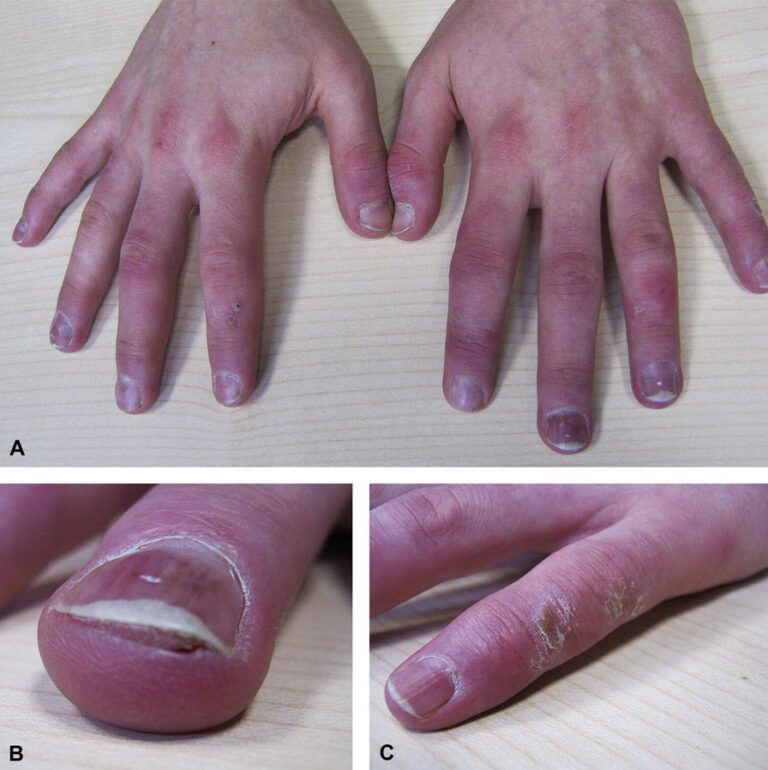CHILBLAINS – SYMPTOMS, CAUSES, AND TREATMENT
Chilblains are the painful inflammation of tiny blood vessels in your skin that happen in response to repeated exposure to cold but not freezing air. Also called pernio, chilblains could cause itching, red patches, inflammation, and blistering on your hands and feet.
Chilblains generally clear up within one to three weeks, particularly if the weather gets warmer. You might have recurrences seasonally for years. Treatment involves protecting yourself from the cold and using lotions to relieve the symptoms. Chilblains do not generally result in permanent injury. But the condition could lead to infection, which might cause severe damage if left untreated.
The best approach to chilblains is to stay away from developing them by limiting your exposure to cold, dressing warmly, and covering exposed skin.

SYMPTOMS
Signs and symptoms of chilblains might include:
- Small, itchy red areas on your skin, usually on your feet or hands
- Possible blistering or skin ulcers
- Inflammation of your skin
- Burning sensation on your skin
- Changes in skin color from red to dark blue, followed by pain
WHEN SHOULD YOU SEE A DOCTOR?
Chilblains will generally get better on their own. Look for medical care to check for complications if the pain is unusually severe, if you suspect an infection, or if your symptoms are not improving after one to two weeks. If the symptoms extend into the warm season, consult a doctor to rule out other conditions. If you have diabetes or poor circulation, healing might be impaired. Be careful and seek care.
CAUSES
No one knows for sure what causes chilblains. They may be an abnormal reaction of your body to cold exposure accompanied by rewarming. Rewarming of cold skin could cause small blood vessels under the skin to expand more quickly than nearby larger blood vessels could handle. This leads to a bottleneck effect and the blood leaking into nearby tissues.

RISK FACTORS
Factors that might increase your risk of chilblains include:
- Clothes that are tight or expose skin to the cold – Wearing tight-fitting clothes and shoes in cold, damp weather might make you more vulnerable to chilblains. And skin which is exposed to cold, damp conditions is more likely to develop chilblains.
- Your sex – Women are most likely to get chilblains than are men.
Being underweight – People who weigh about 20 percent less than is expected for their height are at increased risk of chilblains. - Environment and season – Chilblains are less likely in colder and drier regions as the living conditions and clothes used in those regions are more protective from the cold. Your risk of chilblains is greater if you live in a region with high humidity and cold, but not freezing, temperatures. They are more frequent between November and April.
- Having poor circulation – People who have poor circulation have a tendency to be more sensitive to changes in temperature, making them more vulnerable to chilblains.
- Having Raynaud’s disease – People with Raynaud’s disease are more vulnerable to chilblains. Either condition could result in sores, but Raynaud’s causes different types of color changes on the skin.
- Having an autoimmune disorder – Lupus — an autoimmune connective tissue disease (CTD) — is the most frequent autoimmune disorder related to chilblains.
COMPLICATIONS
Chilblains might cause complications if your skin blisters. If that occurs, you might develop ulcers and infections. Besides being painful, infections are possibly life-threatening if left untreated. Consult a doctor if you suspect infection.

PREVENTION
To prevent chilblains:
- Avoid or limit your exposure to cold.
- Dress in layers of loose clothes and wear mittens and warm, water-resistant footwear.
- Cover all exposed skin as completely as possible when going out in cold weather.
- Keep your hands, legs, and face dry and warm.
- Keep your home and workplace comfortably warm.
- Do not smoke.
If your skin is exposed to cold, it is helpful to rewarm it slowly because unexpected rewarming of cold skin might worsen chilblains.
DIAGNOSIS
You generally would not need to see your doctor for chilblains. If you do visit your doctor, he or she will be able to diagnose your skin condition by looking at it and speaking with you about any recent cold exposure. The examination may also include checking your circulation. He or she might do further tests, like a skin biopsy, to rule out other causes for your signs and symptoms.

TREATMENT
The first line of treatment for chilblains usually involves measures to keep hands and feet warm and dry, like keeping your indoor environment warm and dry, using gloves and socks, and changing damp gloves and socks if necessary.
If your chilblains do not clear up with these home remedies, your doctor might recommend medication, including:
Nifedipine (Procardia) – This kind of blood pressure medication treats chilblains by helping to open up blood vessels and improving blood circulation. Side effects might include flushing, nausea, dizziness, and swelling in the hands or feet.
A topical corticosteroid – Applying a corticosteroid cream to chilblains might help the lesions go away.
If you or anyone you know is suffering from chilblains, our expert providers at Specialty Care Clinics will take care of your health and help you recover.
Call 469-545-9983 to book a telehealth appointment for an at-home check-up.
